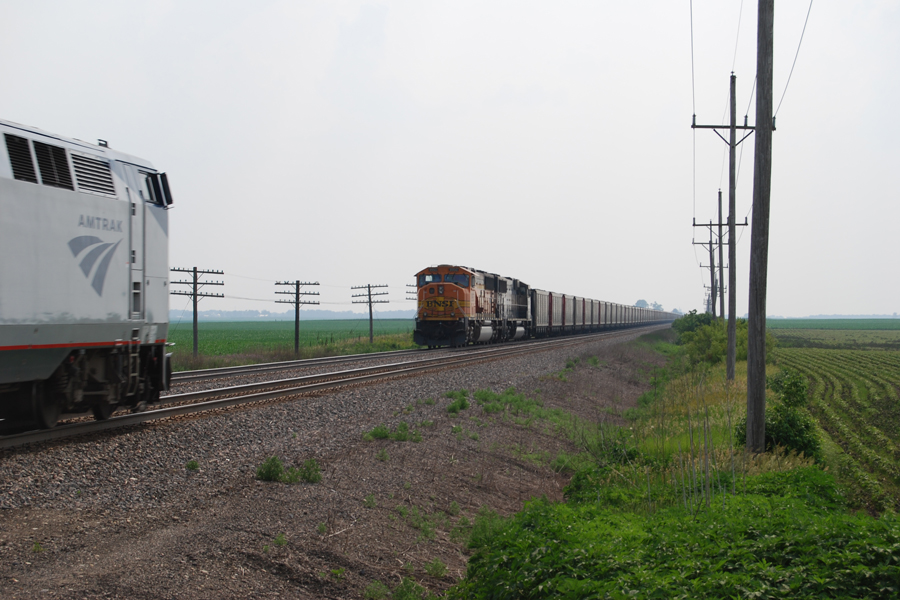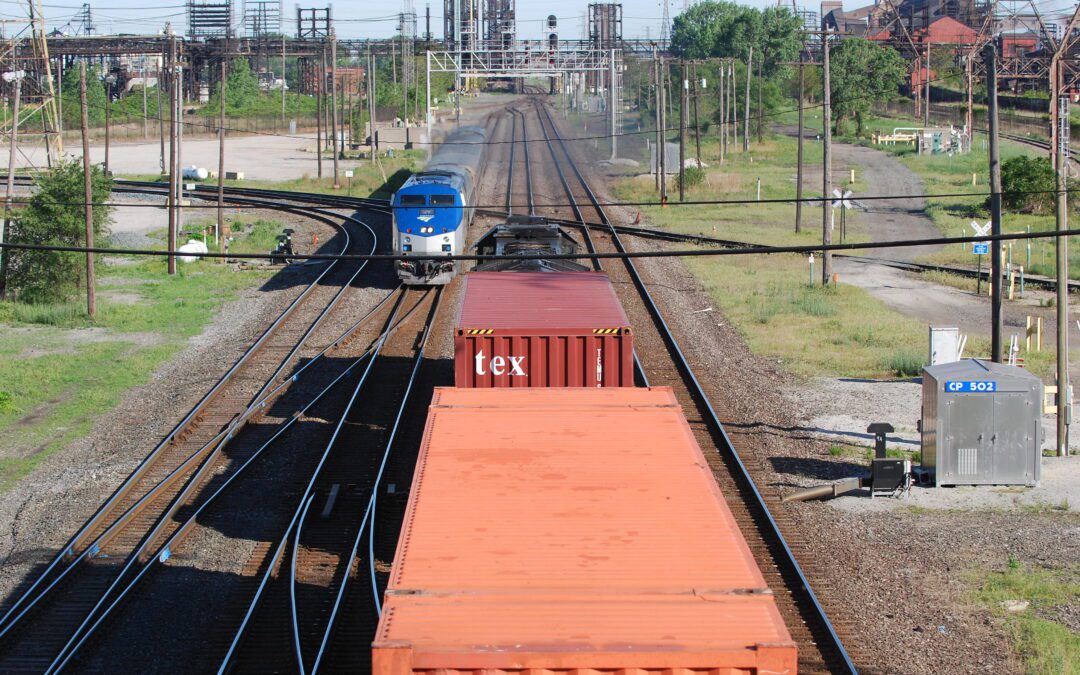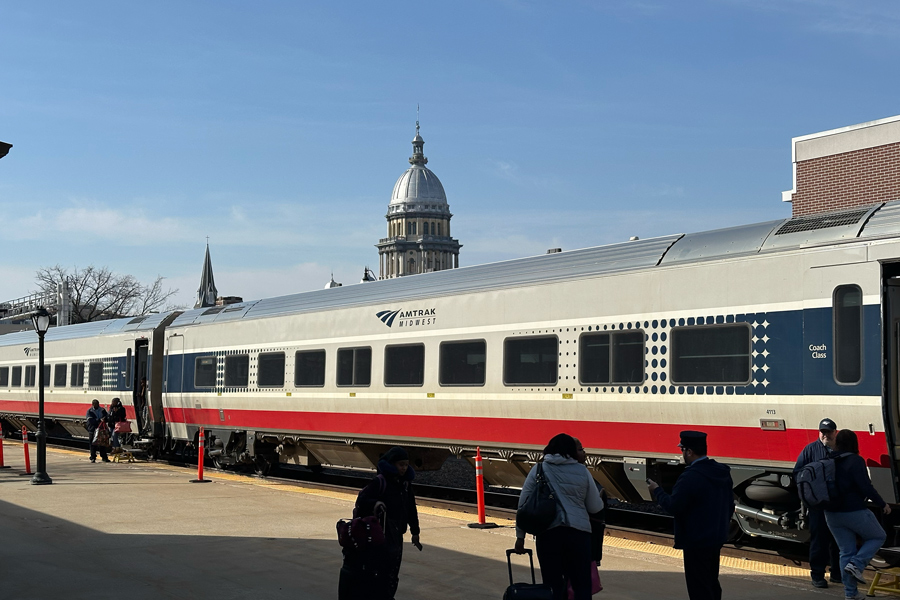Engineering Firm Chosen to Design Critical High-Speed Rail Segment in California HDR has been awarded a five-year contract to deliver engineering and design services for a 54-mile segment between Palmdale and Victorville. This is a critical connection between...
Change Relationship between States, Amtrak and Railroads
Unlike Europe and Asia, most of the rail infrastructure in the U.S. is privately owned. Amtrak and other publicly-owned passenger railroads must negotiate with privately-owned railroads for use of their lines.
New arrangements between governments and railroads are needed to create incentives for railroads to add passenger-grade trackage and be proactive with service improvements to increase passenger market share. The new bargain should persuade railroads to become advocates for increased government funding, just as highway contractors lobby hard for public investment in roads.
The Incremental Cost Problem
The core problem is that Amtrak pays too little for the use of freight tracks. They are paying rates substantially below that of freight customers and yet command premium service. This situation was created by the incremental cost formula contained in Amtrak’s enabling legislation.
Railroads provide substantial public benefit. As such, they were given special powers to assemble and manage rights-of-way that are not available to most corporations. In many cases, the railroads were given land as an incentive to construct new lines through sparsely populated areas. In exchange, railroads have special responsibilities, including (in most cases) being chartered as common carriers. Common carriers are required to haul any commodity offered to them, within reason. That included passengers until 1971.
Amtrak was created in 1971 to relieve the railroads of their obligation to carry passengers. For cultural and regulatory reasons, the railroads were unable to adapt to new market realities created by massive public investments in highways and airports in the 1950s and 1960s. Removing passenger carriage was the first step towards new regulatory structures needed to keep the railroads viable.
There was substantial surplus track capacity when Amtrak was created. Therefore, it was reasonable that Amtrak pay the railroads just the costs incurred by operating its trains. In essence, the deal was that the railroads would switch from losing money on passenger trains to not losing money without really making a profit either.
Since the original deal was made, various government policies have encouraged railroads to focus on very long, heavy trains while removing and downgrading trackage. As a result, the network now is not optimized for short (compared to long freight trains), fast passenger trains.
New government policies are needed that make operating passenger trains profitable for the railroads so that they will invest in the infrastructure needed to run them.
Several strategies can help get us there, most of these have been used with success on routes in several states. A more comprehensive approach is needed.
Sweeten the deal for private railroads
We need new policies that make operating passenger trains profitable for the railroads so that they will invest in the infrastructure needed to run them. There are several strategies, many of which have been proven successful on individual routes in various states.
Increase the rate per train mile
The most effective incentive would be to pay the railroads a market rate for use of the track. The railroad would then be directly responsible for planning, financing, constructing and maintaining high-quality trackage needed to operate passenger trains.
Amtrak pays too little for the use of freight tracks. It pays railroads substantially less than freight customers, yet requires track priority and higher maintenance standards. This is a result of the 1971 legislation that created Amtrak and relieved private railroads of the duty of running passenger trains.
Since that 1971 deal, policies and market conditions have encouraged freight railroads to run a smaller number of longer trains instead of a great number of shorter trains. Lines that were once two or more tracks have been reduced to single tracks with occasional passing sidings. Our railroad network is no longer optimized for (relatively) short, fast passenger trains.
In general, Amtrak pays railroads about $5.00 per train mile, and it already pays incentives above the statutory rate for delivering on-time performance. Our initial research suggests that the per-train-mile charge should be increased substantially to make passenger trains an appealing customer for freight railroads. Revenue will go up with the increased ridership that comes with higher frequency and reliability. Per-train costs will go down with economy of scale and more efficient train equipment. These higher revenues and lower operating costs will largely offset the higher per-mile fee. This would also result better freight service as the railroads are encouraged to think more holistically about their infrastructure and dispatching.
The challenge to this incentive is our cultural bias against anything perceieved as government sponsorship of private enterprise, often denigrated as “subsidies.” This perception conveniently ignores the many ways we regularly subsidize private businesses that provides public benefit, especially those that build and maintain our roads and airports.
Give the host railroad a share of the revenue increase
Faster and more frequent trains draw more passengers, and more riders produce more revenue. A simple incentive to encourage host freight railroads to prioritize passenger trains is to cut them in on the revenue. This creates a direct connection between the level of service railroads provide and the returns they receive.
Make incentive payments route-specific
An immediate improvement could be achieved by making incentive payments on a route-by-route basis as opposed to a system-wide basis. Today, Amtrak makes incentive payments based on the performance of all trains on the host railroad, a territory that could cover half of the nation. One late train in Florida could reduce the payment, even if trains in Indiana are on time. As a result, challenges on one route can effectively make it impossible to earn the incentives on the other routes, removing the motivation to achieve higher performance system-wide.
Reduce property taxes on railroads hosting passenger service
Highways and airports do not pay real estate taxes. In fact, expanding a highway or an airport has a negative impact on local communities by removing property from the tax rolls. Even though they perform the same basic function as highways and airports, railroads are taxed because they are owned by private entities, and the tax rates increase as the quality of the track improves. This creates a strong incentive to remove tracks and a disincentive to add capacity needed for passenger trains.
Railroads that host passenger trains should be on a level playing field with other transportation infrastructure entities and not be taxed.
Provide direct capital support for track work
Highway and airport capital projects are overwhelmingly funded with federal resources. There should be a comparable federal commitment to railroads hosting passenger trains. In 2010, $1.2 billion in American Recovery and Reinvestment Act (stimulus) funds financed improvements to most of the Union Pacific Railroad line between Chicago and St. Louis. For this investment, we’ll have a 110 mph railroad running most of the length of the state of Illinois. (For comparison, the Illinois Tollway is expecting to spend $1.9 billion to rebuild 22 miles of the Tri-State Tollway.)
To be truly effective, this approach now needs to be combined with the per-train incentives described above to increase frequency and reliability on the route.
Provide more support for highway grade crossing separations
Grade separating railroads from highways has safety and service benefits for both the road and the railroad. Building bridges puts people to work: construction crews, steel companies, structural engineers. Highway builders love building bridges, and politicians love ribbon-cutting ceremonies in front of new bridges. Some states already have funds dedicated to grade separations, but we need dramatically more.
Employ a dedicated track maintenance gang
A freight train doesn’t require the precision track alignment that a high-speed passenger train does. If the passenger train operator provides a track gang dedicated to a section of track, the railroad can be maintained to a higher standard, and crews can reach the area more quickly to resolve issues in case of a problem. The Capitol Corridor in California has successfully adopted this approach.
Use the right type of train equipment and keep station stops short
Freight trains and passenger trains operate at different speeds and stopping patterns. Passenger trains operate at higher top speeds, but also make more frequent stops. Lightweight trains can accelerate and stop faster, minimizing interruptions at stations. New trainsets are also more reliable, minimizing the disruptions from on-the-road breakdowns.
In addition to accelerating quickly out of station stops, keeping the time in the station to a minimum is needed to keep railroad traffic flowing well. Level boarding is a great way to minimize dwell times: all doors can open automatically and fewer people need assistance. Stops at smaller stations that currently require several minutes to manually open doors and get passengers up and down stairs can be reduced to a minute or less. Stops at busier stations can also be greatly shortened by eliminating the long lines that form as a result of only having several doors open.
Limit Speeds to 90 MPH
Most intercity passenger rail planning has focused on 110 mph, the fastest trains can go without the expense of separating highway crossings. But the railroads are steadfastly opposed to mixing 110- mph passenger trains with long and heavy freight trains. It would be more productive to design for higher frequencies on shared freight tracks at 90 mph and focus on linking those shared tracks to segments of high-speed line to achieve competitive trip times.
The Latest from HSRA
Our Latest Blog Posts
Check out the latest news, updates, and high speed rail insights from our blog!




